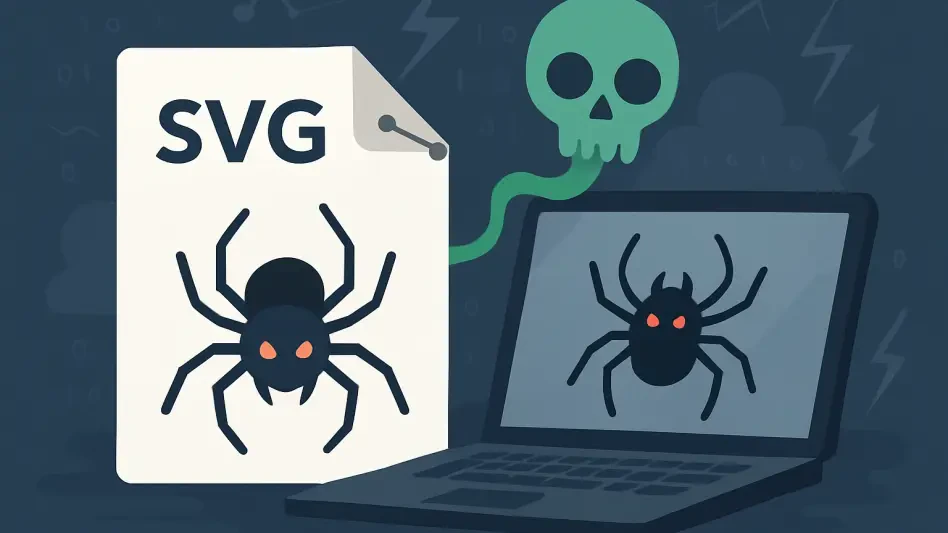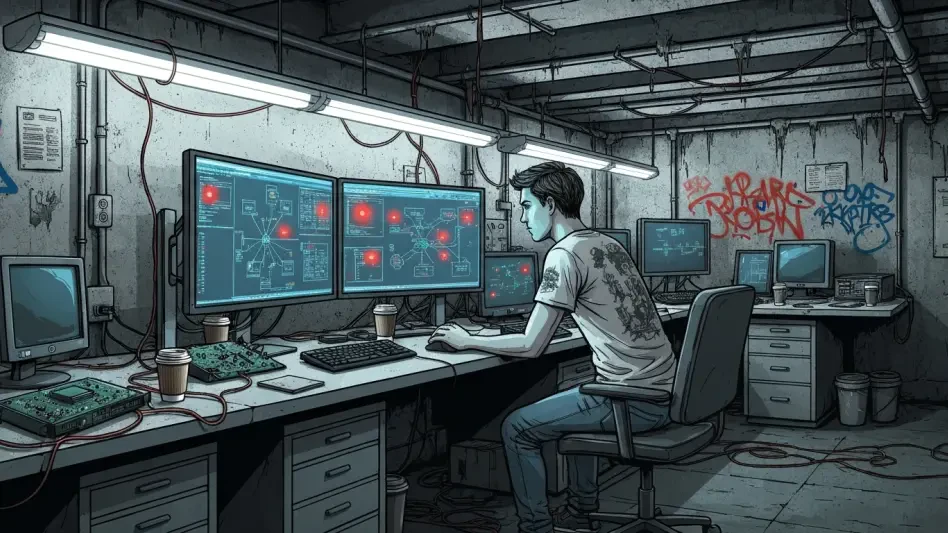In an alarming development for cybersecurity professionals, a sophisticated malware campaign has emerged that manipulates Scalable Vector Graphics (SVG) files to distribute dangerous Remote Access Trojans (RATs) such as XWorm and Remcos RAT. Uncovered by diligent researchers, this threat leverages email attachments and unconventional file formats to bypass traditional security protocols, presenting a formidable challenge to endpoint protection systems. The ingenuity of this attack lies in its use of seemingly harmless SVG files, often perceived as safe, to execute malicious payloads when rendered in vulnerable environments or phishing pages. This campaign signifies a broader trend where cybercriminals continuously adapt their tactics, exploiting trust in benign content to infiltrate systems. As digital threats evolve with increasing complexity, understanding the mechanisms behind such attacks becomes paramount for safeguarding sensitive data and infrastructure against these stealthy intrusions.
Unconventional Delivery Methods in Modern Malware
A striking feature of this malware campaign is its innovative approach to delivery, utilizing multiple vectors to maximize infection rates. Primarily, attackers deploy malicious EML files as direct email attachments or embed harmful URLs hosted on trusted platforms like ImageKit, which often lead to ZIP archives containing obfuscated BAT scripts. What sets this campaign apart is the exploitation of SVG files embedded with JavaScript, appearing as innocuous images but capable of triggering malicious payloads. This method capitalizes on the lesser scrutiny given to SVG files compared to traditional executable formats, allowing attackers to slip past initial security checks. The dual delivery strategy—combining email attachments with deceptive graphics—demonstrates a calculated effort to exploit user trust and system vulnerabilities, underscoring the need for heightened awareness around file types that are often overlooked as potential threats in routine security assessments.
Further examination reveals the intricate infection chain that follows the initial delivery. Once activated, the BAT scripts employ PowerShell for in-memory payload injection, a technique that evades file-based detection by avoiding disk storage. This fileless execution method marks a significant shift in malware tactics, as it minimizes traces that traditional antivirus solutions might detect. The use of SVG files as an infection vector is particularly novel, highlighting how attackers are increasingly turning to non-traditional formats to bypass static security measures. Social engineering plays a critical role here, as users are often tricked into rendering these files in browsers or applications, unwittingly initiating the attack sequence. This blend of technical sophistication and psychological manipulation presents a complex challenge for cybersecurity defenses, necessitating advanced detection tools and user education to mitigate the risks posed by such deceptive delivery mechanisms.
Sophisticated Evasion and Persistence Tactics
Delving into the technical intricacies, this campaign showcases advanced evasion techniques designed to thwart even robust security systems. The malware targets essential Windows security features by disabling the Antimalware Scan Interface (AMSI) and Event Tracing for Windows (ETW) through dynamic .NET reflection and memory patching. By resolving native functions to manipulate security processes in memory, the threat remains undetected during critical stages of infection. The use of Base64-encoded payloads, hidden within batch file comments and decrypted via AES with hardcoded keys and GZIP decompression, further complicates analysis. These payloads are executed through in-memory .NET assemblies, eliminating disk-based file creation and significantly reducing detection chances. Such methods reflect a high degree of sophistication, as attackers prioritize stealth over traditional persistence, challenging conventional security tools to adapt to these elusive, memory-based operations.
Persistence is another critical aspect of this campaign, ensuring long-term access for malicious actors. The malware establishes itself by creating BAT files in the Windows Startup folder, enabling automatic execution upon system restart or user login. This persistence mechanism guarantees that even if initial detection attempts fail, the threat remains active within the system. Additionally, the fileless nature of the attack, relying heavily on in-memory operations, means that traditional forensic methods struggle to identify and remove the infection. The deployment of potent RATs like XWorm and Remcos RAT allows attackers to maintain control, exfiltrate data, and execute further commands remotely. This combination of evasion and persistence tactics underscores the evolving nature of cyber threats, pushing the cybersecurity community to develop more dynamic and behavior-based detection strategies to counter such stealthy and enduring attacks effectively.
Emerging Trends and Cybersecurity Implications
The broader implications of this campaign point to a disturbing trend in cybercrime: the shift toward fileless attacks and the exploitation of non-traditional file formats. SVG files, often trusted due to their association with harmless graphics, represent an ideal vector for attackers seeking to exploit gaps in static detection mechanisms. The reliance on trusted platforms for hosting malicious content further blurs the line between legitimate and harmful files, amplifying risks for unsuspecting users. This approach not only challenges technical defenses but also leverages social engineering to initiate infection chains, as users are more likely to interact with content perceived as safe. As attackers refine their methods to exploit these trust-based vulnerabilities, the cybersecurity landscape must evolve to address both the technical and human elements of such threats, emphasizing the importance of proactive monitoring and updated security protocols.
Reflecting on this campaign, it becomes evident that the dual delivery methods, intricate infection chains, and advanced evasion techniques have set a new benchmark for cyber threats. The use of obfuscated scripts and fileless execution, coupled with persistence mechanisms, has posed significant hurdles for traditional defenses. Looking ahead, organizations must prioritize the adoption of behavior-based detection systems and invest in user training to recognize deceptive file types and phishing attempts. Collaborative efforts within the cybersecurity community to share threat intelligence will be crucial in staying ahead of such innovative attacks. As malicious actors continue to leverage technical sophistication alongside user trust, the focus should shift toward developing adaptive security measures and fostering a culture of vigilance to safeguard digital environments against these ever-evolving risks.








